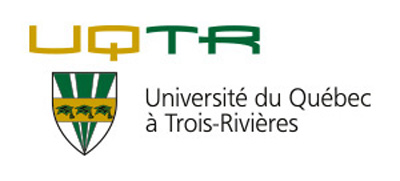Related projects
Discover more projects across a range of sectors and discipline — from AI to cleantech to social innovation.
Mitacs brings innovation to more people in more places across Canada and around the world.
Learn MoreWe work closely with businesses, researchers, and governments to create new pathways to innovation.
Learn MoreNo matter the size of your budget or scope of your research, Mitacs can help you turn ideas into impact.
Learn MoreThe Mitacs Entrepreneur Awards and the Mitacs Awards celebrate inspiring entrepreneurs and innovators who are galvanizing cutting-edge research across Canada.
Learn MoreDiscover the people, the ideas, the projects, and the partnerships that are making news, and creating meaningful impact across the Canadian innovation ecosystem.
Learn MoreWireless Sensor Networks (WSN) contain large number of tiny, low cost sensors. Many sensor networks have mission critical tasks that involve data collection in remote, inaccessible or hostile environments, such as battle fields, deserts, mountains, etc. These sensors are normally monitored and managed by a trusted authority commonly known as sink or collector. In certain special classes of WSNs, this sink may not be online all the time. It visits and collects information from the nodes at certain intervals. Such WSNs are known as unattended wireless sensor networks (UWSNs) [1]. Since the sink visits and collects information at intervals, every node has to secure the data until the next visit of the sink. Security needs should be taken into account to ensure data protection (also called data survivability), authentication of sensors.
Existing distributed security mechanisms for WSNs [2] are not suitable for the UWSNs due to infrequent visits of the sink. Cryptographic key management techniques provide data authenticity [3, 4] and integrity but do not ensure data survivability. Self-healing in UWSN has also been widely studied [5]. In self-healing techniques, nodes can regenerate keys and continue functioning normally after being compromised. Most of the existing schemes assume that the sensors are static between successive visits from the sink. Efficient data survivability in mobile UWN has not been well studied. In a large field it might not have efficient to visit all nodes. Secure data aggregation is an important problem in this regard. Hence, we will design efficient algorithms which will ensure secure data aggregation by special sensor nodes called aggregators. Sink can then visit only the aggregator nodes, instead of all nodes.
In this project, will be study the following problems:
1. Efficient data survivability in mobile UWSN, and
2. Efficient data aggregation with self-healing in UWSN
We will not only design algorithms, but also simulate these algorithms using simulators like NS2.
References:
[1] R. D. Pietro, L. V. Mancini, C. Soriente, A. Spognardi, and G.
Tsudik, “Data security in unattended wireless sensor networks”, IEEE
Transactions on Computers, vol. 58, pp. 1500-1511, 2009.
[2] X. Chen, K. Makki, K. Yen, and N. Pissinou, “Sensor network
security: a survey”, IEEE Communications Surveys Tutorials, vol. 11,
no. 2, pp. 52-73, 2009.
[3] R. D. Pietro, C. Soriente, A. Spognardi, and G. Tsudik,
“Collaborative authentication in unattended WSNs”, in ACM WISEC, pp.237-244, 2009.
[4] T. Dimitriou and A. Sabouri, “Pollination: A data authentication
scheme for unattended wireless sensor networks”, in IEEE 10th
International Conference on Trust, Security and Privacy in Computing
and Communications (TrustCom), Nov. 2011, pp. 409-416, 2011.
[5] R. D. Pietro, D. Ma, C. Soriente, and G. Tsudik, “Posh: Proactive
cooperative self-healing in unattended wireless sensor networks”, in
IEEE SRDS, pp. 185-194, 2008.
Amiya Nayak
University of Ottawa
Globalink Research Internship
Discover more projects across a range of sectors and discipline — from AI to cleantech to social innovation.
Find the perfect opportunity to put your academic skills and knowledge into practice!
Find ProjectsThe strong support from governments across Canada, international partners, universities, colleges, companies, and community organizations has enabled Mitacs to focus on the core idea that talent and partnerships power innovation — and innovation creates a better future.













































































































































































































































































































